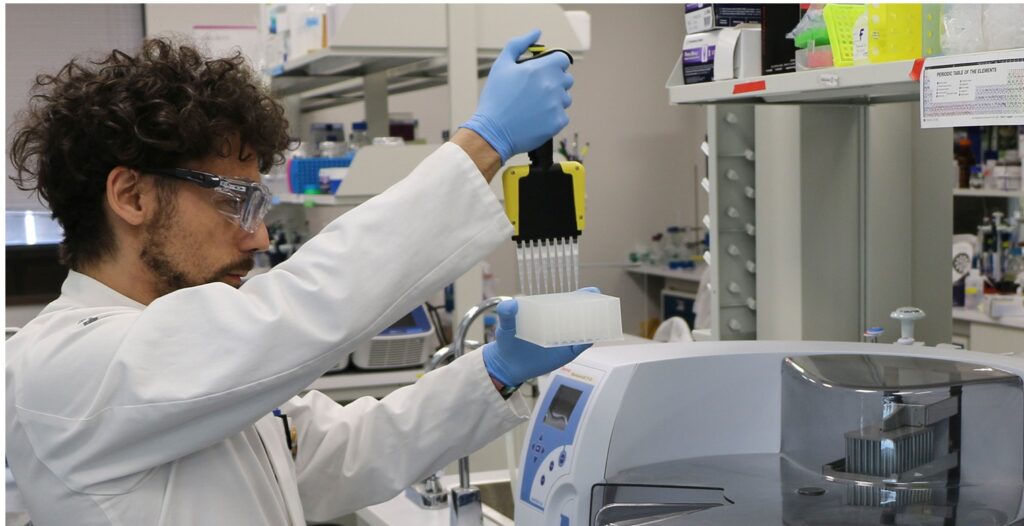It all comes back to a potato. A Yukon Gold potato, to be precise.
Back in his summer student days, Dr. Steve Webb, Executive Director and CEO of the Global Institute for Food Security (GIFS), worked for famous potato breeder Gary Johnson, who helped develop and breed the Yukon Gold potato. “When I worked for him that summer, he bred potatoes by phenotype and it was his eye, expertise and intuition that allowed him to breed those varieties in those crops,” says Webb.
Today, things have changed… for the better! We need Gary Johnsons, says Webb, but we also need to equip those Gary Johnsons with the tools and technologies to understand crop genomes and metabolomic profiles to breed crops faster and drive the rate of improvement. Enter the Omics and Precisions Agriculture Laboratory (OPAL) at GIFS: a first of its kind and state-of-the-art facility in Canada providing combined genomics, phenomics and bioinformatics services and one-stop shop for complete analyses of microbial, plant and animal samples.
“This is game changing technology,” said Webb. “The Ag and Food sector is using the most advanced technology — we're a technology-intensive and knowledge-driven industry — and those insights we gain provide a level of predictability that was not previously possible.” OPAL is one of five technology platforms at GIFS and is key in its bold vision of a world where everyone has access to safe and nutritious food.
With OPAL’s sequencing capabilities, crop breeding has moved beyond intuition and into one of precision that can enhance the overall resiliency of crops and effect massive positive change in food security globally.
Understanding this linkage between genomes and Ag Tech helps improve crop yield and profitability, advance crop breeding, and increase efficiency and sustainability for the Ag and Food Tech sectors. Farmers can target fields with precise amount of crop inputs like water, fertilizers and pesticides, reducing waste; breeders and breeding programs can be more predictive, ensuring Canadian producers have the most efficient and effective varieties in their breeding programs; and agronomists can identify, improve and advance crop varieties, accelerating crop breeding.
In fact, OPAL has already helped GIFS push further in its mandate and allowed them to be instrumental on innovative Ag Tech projects, like successfully mapping the canola pan-genome and developing cutting-edge technology with the Plant Phenotyping and Imaging Research Centre. This renewed direction for GIFS has seen Nutrien, the Government of Saskatchewan and the University of Saskatchewan endorse GIFS and provide additional funding to support its next phase of growth.
Additionally, GIFS has leveraged OPAL to support projects beyond the Ag Tech sector, like working with the Saskatchewan Health Authority’s diagnostic testing for COVID-19 during a one-year pilot. “One thing that OPAL and all our platforms demonstrate is that they are independent of a business vertical. We use them in the Ag and Food sector, but the same technologies fit in health care, green energy and the biomaterial space,” says Webb. “We see at GIFS, the opportunity for us to complement the existing ecosystem and help connect, integrate and leverage our capabilities.”
At its new home at Innovation Place in Saskatoon, GIFS is well positioned to implement its impressive research and technical expertise and better able to connect with potential partners, not to mention its sister organization the Global Institute for Water Security, big brother the University of Saskatchewan and its own facilities.
“At Innovation Place we can operate at scale, synergize within GIFS and make a difference in Ag and Food research and innovation,” said Webb. The new facility has twice the laboratory space and three times the plant growth facilities like greenhouses and plant growth chambers. The new location houses all GIFS’ facilities, reducing fragmentation and streamlining workflows. “Plus, the name is totally cool,” says Webb.
